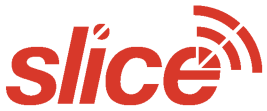9 Things to Keep in Mind When Estimating Bandwidth Requirements for a Live Event
The passage of time brings higher standards for events (a high speed Internet connection!) but also the technology to meet them (online bandwidth calculators!). Let SLICE be your guide as you plan an event for the ages!
9 Things to Keep in Mind When Estimating Bandwidth Requirements for a Live Event
Not So Great
We all read (or read the SparkNotes for) Jazz Age novel, The Great Gatsby in high school. If you will recall, the titular character throws parties featuring food, drinks, a pool, and live music at his Long Island mansion. Gatsby’s neighbors are very impressed with his parties, and they soon become legendary, attracting guests from all over the New York metropolitan area. In the 1920’s, the status of legendary event producer was a lot easier to attain. If Gatsby hosted those same events today, everyone would leave when they realized there was no Wi-Fi connection.
Until time travel technology is perfected, event producers’ affairs will have to live up to 2014’s standard; meaning they feature amenities like bandwidth to meet guests’ various Internet-reliant needs. Anticipating these needs and estimating the amount of bandwidth required to satisfy them can be overwhelming. Fortunately, SLICE has you covered!
The Network Requirements for 8 Common Event Activities:
Video Streaming
Whether the event is a fundraiser or a meeting with clients, showing guests a video from an organization’s website or YouTube account explaining its goals can be a powerful means of persuasion. It can also fail miserably if the video lurches to a stop so that it can buffer or refuses to play at all. The difference between seamless streaming and technical difficulty boils down to the amount of bandwidth available to accept data from the Internet present in the venue. Although most videos can play on less than 10 megabits per second (Mbps) of high speed Internet, experts recommend purchasing at least 20 Mbps to ensure smooth streaming.
Video Conferencing
Video conferencing is a great way to communicate with those who could not make it to the event. Corporate video conferencing technology utilizes as much WIFI as a standard definition television requires, with the amount of bandwidth needed rising with the number of people partaking in the video conference. For example, a Skype session featuring 7 or more participants calls for a minimum download/upload speed of 4Mbps/128 kilobytes per second (Kbps), although Skype suggests8Mbps/512Kbps.
Music Streaming
Your event’s soundtrack could mean the difference between teambuilding and tumult, so choose wisely. Once you have created a playlist, it is time to decide on a music streaming service. The streaming service dictates wireless network requirements. The table below displays the specifications for four popular options. All information is taken from this article.
ServiceMbps Download SpeedsPandora Internet Radio1-2 MbpsSpotify1-2 MbpsiTunes Radio1-2 MbpsBeats Music5 Mbps
Social Media
Imagine producing an Instagram-worthy event that guests were unable to upload images to Instagram from. Talk about #tragic. To prevent such a scenario, make sure you have purchased enough WIFI to support guests’ social media usage. Assuming the event’s itinerary will keep guests too busy to go on a Facebook bender, 1-2 Mbps per user should suffice.
Email
Compared to the other activities on this list, downloading emails requires little bandwidth. Indeed, software email solutions only become a WIFI concern when users download enormous attachments. Accessing a web-based email falls under the category of web browsing, the bandwidth consumption of which we cover further down the list.
File Sharing from the Cloud
Depending on the venue’s WIFI situation, cloud computing can be a hit or a miss. With enough Mbps, cloud computing is a secure and innovative way to store data and share files. An insufficient amount can prevent users from accessing files, rendering the cloud useless. Even worse, inadequate bandwidth can cause the Internet connection to fail during the information transferring process, resulting in data loss. Because purchasing the right amount of MBPs is so crucial when it comes to cloud computing, SLICE suggests consulting a bandwidth calculator for a custom estimate.
Basic Web Browsing
The average web browsing session, which, as we mentioned earlier, includes accessing web-based email, is unlikely to consume more than 10Mbps per hour.
VoIP
Voice over Internet Protocol (VoIP) technology allows users to place free phone calls via a standard Internet connection. Each call utilizes a fixed amount of bandwidth that is determined by the compression algorithm in use. The greater the connection speed, the better the call’s sound. Most high speed Internet providers suggest at least 512Kbps.
SLA or NAY?
We have another piece of advice regarding WIFI for your event: although purchasing a service level agreement (SLA) bandwidth package is not mandatory, it is a good idea if your event revolves around Internet-dependent activities. If you are interested in learning more about SLA bandwidth, check out ourinterview with an expert.
As the decades go by, the standard for what constitutes a successful event rises. Purchasing enough high speed Internet to support the 8 aforementioned activities will bring you much closer to meeting it!
